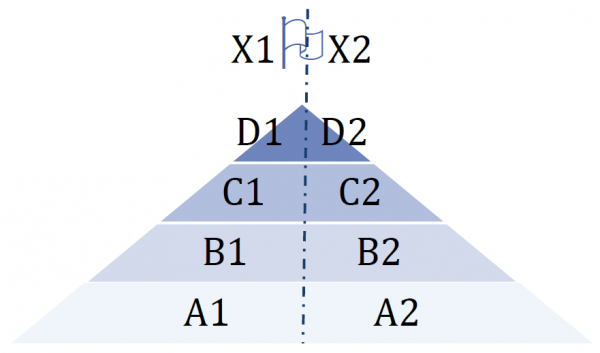XES Certification proposal accepted by XES WG
On July 19, 2017, the XES WG has approved of the XES Certification proposal v2. As a result, we can now start checking the certification levels of the tools that support XES. Based on this certification, it will be clear whether XES files can be successfully transferred between these tools.
 |
The figure above is the main figure in this proposal. It shows the four different levels of certification.
| Certification level | Description |
| A | XES Event data that only contains case identifiers and activity names. This level allows for process discovery and conformance checking. |
| B | Level A extended with event types (lifecycle:transition attribute) and timestamps (time:timestamp attribute). In addition, this level allows for performance analysis, and for the generation of basic simulation models. |
| C | Level B extended with information on resources (org:resource attribute). In addition, this level allows for social network mining, and for the generation of more advanced (resource–aware) simulation models. |
| D | Level C extended with attributes from any standard XES extension. As a result, event data on this level still has clear semantics. |
Beyond these four levels, we can have XES event logs that contain attributes from non-standard XES extensions and/or attributes without an extension. For these logs, we introduce the out-of-level flag X:
| Certification out-of-level flag | Description |
| X | Level D extended with attributes from non-standard XES extensions and/or attributes without an extension. As non-standard XES extension may conflict on the semantics of certain attributes, and the semantics of extension-less attributes is not clear, the semantics of event data flagged with X is possibly not clear. |
For the Level A support, we foresee two possibilities:
| Level A support | Description |
| 1 | Fixed support, meaning that for both the case identifiers and the activity names the concept:name attribute is used. |
| 2 | Flexible support, meaning that for the case identifiers a trace classifier is used, and for the activity names an event classifier is used. Note that the event data can contain multiple trace classifiers and multiple event classifiers. In such cases, by default the first classifiers are selected, or (if the tool permits) other classifiers may be selected by the user. |
A tool that only supports possibility 1 will be certified as Level A1, a tool that only supports possibility 2 as Level A2, and a tool that supports both as Level A. As Level A underlies all other levels, we also make this distinction on the other levels. For example, a tool that supports Level B but only Level A1 will be certified as B1, a tool that supports Level B but only Level A2 as B2, and a tool that supports B and both A1 and A2 as simply B.
Finally, we distinguish export from import, as the levels on both may not be the same. A tool that has Level B for export can write XES event data that includes:
- case identifiers and activity names using either the fixed or the flexible support, and
- event types and timestamps.
A tool that has Level B1 for import can successfully (in a semantically correct way) read XES event data that includes:
- case identifiers and activity names using the fixed but not the flexible support, and
- event types and timestamps.